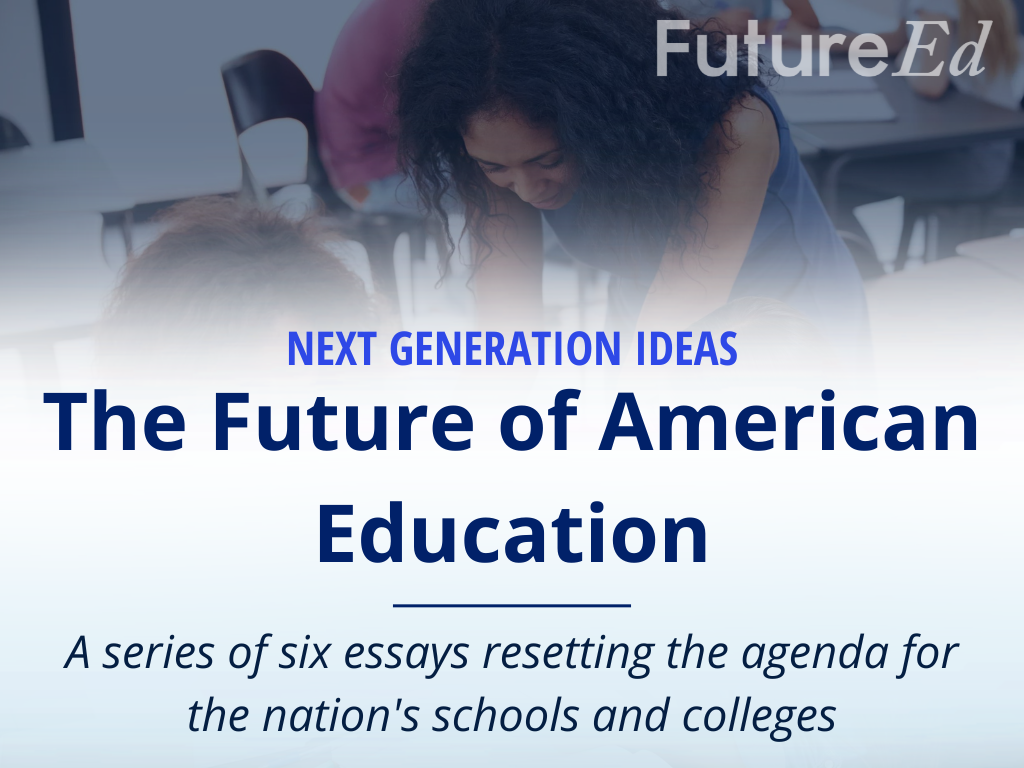Jeffrey Selingo is author of three books on higher education, including his latest, Who Gets In and Why: A Year Inside College Admissions. He’s also a special advisor and professor of practice at Arizona State University and co-host of the podcast, Future U. He is a FutureEd senior fellow.
In November 1965, at a ceremony at Southwest Texas State College, President Lyndon Johnson signed the Higher Education Act, a law he said “means that a high school senior anywhere in this great land of ours can apply to any college or any university in any of the 50 states.”
The legislation and its expansion of federal financial aid for students and colleges ushered in a “universal college” movement in the United States, much like the “high school movement” at the turn of the 20th century that made 12 years of schooling the norm in an increasingly complex world. When the Higher Education Act was signed, about half of high school graduates went right on to college; today, some two-thirds enroll immediately in some sort of postsecondary education.

But there is mounting evidence that Americans are losing confidence in higher education as an engine of economic opportunity and social mobility. Americans have drastically shifted their priorities for K-12 education since the start of the pandemic. A new Populace study finds that “getting kids ready for college” has plummeted from the 10th highest priority to 47th. A growing number of commentators are also openly questioning the value of college.
That’s unfortunate. The reality is that a college degree continues to pay substantial dividends. But rather than continuing to force students down the same narrow post-secondary pathway, it’s increasingly clear that the nation needs a more flexible system for providing high school graduates the additional education and training they need, a system that gives students more options than State U or Starbucks.
A college degree is still worth the expense for many students, even if the journey to one doesn’t begin three months after high school graduation. Research I’m working on with the Burning Glass Institute suggests that having a bachelor’s degree delivers a wage premium worth more than four years of experience compared to those without a degree, findings confirmed by earlier research by Georgetown University’s Center on Education and the Workforce. What’s more, a degree gives workers greater mobility to move up (and out) into better jobs.
Why, then, are both students and commentators pushing back against college? The reasons are over-lapping and complex, but most of the research points to money: it costs too much and prospective students don’t see it as worth the investment.
College presidents tell me their competition is now not only other colleges but also employers who are advertising jobs that pay more and offer flexibility. In a tight labor market, employers, including the states of Maryland and Utah as well as Delta Airlines, have dropped degree requirements for some jobs in the past year. And more companies, from Walmart to Disney, are offering education benefits as part of the job, just like health care and retirement, giving students the option to start work and then go to college. Working was always a side gig for many college students; now for many students working is core and learning is the side gig.
That’s a reason why too many people start a degree but don’t finish it. The number of people who began college but left without a credential grew to 39 million in 2020, up nearly 9 percent in two years. That represents more than one in five people in the United States over age 18, according to a report released this year by the National Student Clearinghouse Research Center.
One important solution is to increase the number of registered apprenticeship programs across all career fields. Registered apprenticeships combine paid on-the-job learning and formal instruction with a credential. In 2021, there were almost 27,000 active registered apprenticeship programs in the U.S. training over 593,000 apprentices, according to the U.S. Department of Labor’s Employment and Training Administration.
While nearly 3,000 new programs were established in 2021 alone, we still have an antiquated image of apprenticeships as pathways that prepare young adults for the trades or factory work. But that perception is starting to shift as apprenticeships turn up in all kinds of fields, especially to train much-needed tech workers. The number of registered programs in tech fields grew about 41 percent between fall 2020 and 2021, according to an analysis by Work Shift. Still, the number of young adults in training programs pales in comparison to those in college.
Another key reform is to provide better education about careers and the training and education needed for them earlier in a person’s schooling. By high school, students should start spending time rotating among employers and school much like they do now with college courses in dual-enrollment programs. Whether they want to go to college immediately or not, such an approach can give students a mix of hands-on learning with the academic elements of high school and early college. Depending on where they get their experiential learning, students can also earn industry certifications that can lead to a job right after high school.
Finally, we need to give young adults easy on-ramps to higher education if they decide to skip the turn after high school. We can do that by offering a broader array of options that stack up to a degree. For instance, students can start in low-risk noncredit programs that teach students just enough to start a career. The goal of these programs wouldn’t be to give students everything they need to know for a job like a degree would but enough to get them started. By proving their knowledge on the job, they can later apply for credit. Eventually, those credits could equal a degree.
Another on-ramp could be more robust transfer agreements from two-year to four-year colleges, so that students feel their associate’s degree can easily lead to a bachelor’s degree when they’re ready. Right now, only 31 percent of community-college students transfer to four-year colleges, and only about half of those end up with bachelor’s degrees. And we could encourage more partnerships between colleges and companies like the one forged between Arizona State University and Starbucks that helps students more easily earn a degree while working.
The Higher Education Act was successful in making higher education the destination for high school students over the last 50 years. But half a century later, it’s clear that it’s going to take more than a single pathway to and through college to achieve Lyndon Johnson’s goal of making post-secondary education available to every American student.




